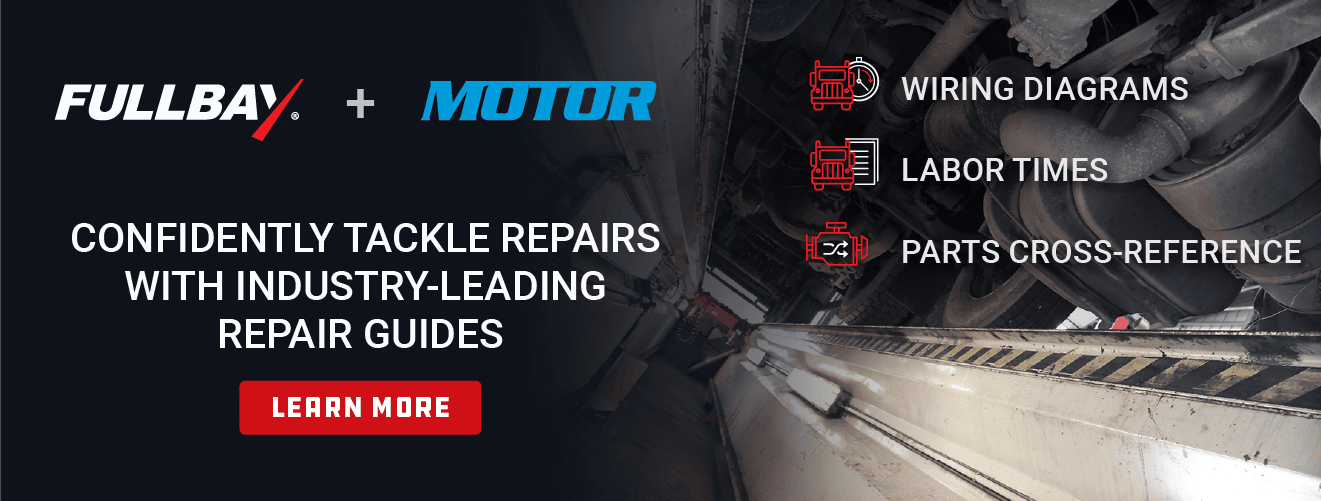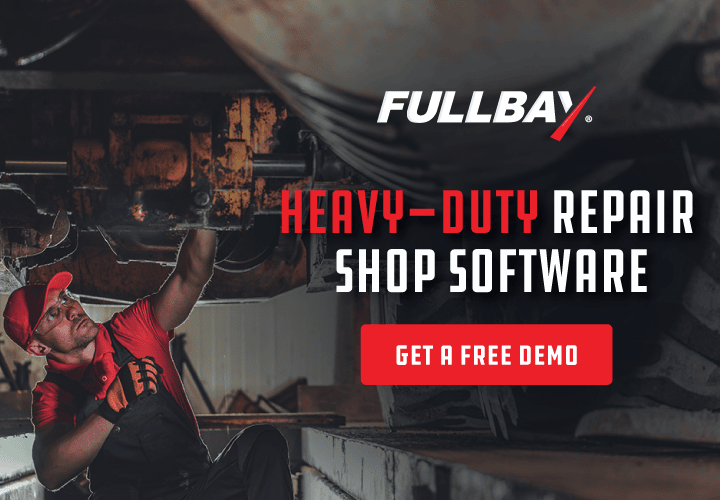Webinar Recap: Win-Win-Win: How to Prevent Unscheduled Downtime in Fleets

Preventive maintenance work, or PMs as we like to call them, are a big deal for everyone: fleets, shops, drivers, and everyone sharing the road and/or waiting on deliveries. If heavy vehicles aren’t operating safely, they’re not going to get their freight to its intended destination. That’s a broken link in the supply chain—and a hazard to everyone else on the road besides.
Here at Fullbay, we encourage shops to secure preventive maintenance work. Sure, we can trot out the usual arguments: it’s steady work that can help keep the lights on, and that’s always good for your shop. But figuring out how to get that work can be tricky if you’ve never done it before.
That’s why we put together Win-Win-Win: so shops can learn how to pitch PMs to customers and get that ultra-important work. Jacob and Chris had a long and interesting conversation about how to frame your shop and the work you can do in your pitch, and we hope you’ll listen to the entire webinar here…but if you’re short on time, give it a taste test with our recap!

How do I pitch PMs to my customers?
First, understand why PM work is so important for fleets
Chris put it pretty succinctly: “As a driver, if I’m stuck on the side of the road, I’m just burning away my DOT hours of service,” he explains. “Then you get into the cascading loss of business.”
What happens if a fleet ignores PM work? Beyond the potential lost load any individual truck is carrying, unexpected downtime can also lead to:
- A more expensive repair or tow: If something blows out while you’re on the road, it’s almost always going to be a pricier fix than if you had the part replaced in the yard.
- A lost customer who is upset about their late shipment: If the truck is on the side of the road, its freight isn’t moving. Your customer’s business may be dependent on that freight. You can see how this doesn’t end well for them or you.
- The loss of fleet drivers over preventable breakdowns: Drivers don’t want to be tied to unsafe vehicles that are constantly undergoing emergency maintenance.
- A road experience that’s less than safe: An average of 11 deaths a day are tied to heavy-duty trucks. We estimate about four of these fatalities are linked to improper maintenance.
There are other, smaller problems tied to unscheduled downtime, but those are four of the biggest. If you can show a potential fleet customer that you understand these issues, you can earn yourself a spot at their table.
But what do you do once you have that spot?
Next, build a PM program that attracts fleets
We recommend listening to the webinar in its entirety, as it goes into detail about planning a pitch and crafting a program that speaks to your potential customers. But here’s a handful of things you can do to build out that program:
Look for medium-sized fleets
The big fleets probably have things covered. The medium and small folks will need help. You can find local fleets using a service like FleetSeek…or you can do things the old-fashioned way and nose around in your area.
Sit down with the fleet to determine what they need.
What equipment is most important for that organization? Is it a generator that needs to be running, or a trailer that goes 50,000 miles every couple of months? You’ll need to get a bead on how the equipment that you’ll be working on is performing now. Identify their pain points, whether it’s uneven wear and tear or just a bad spec job.
Show them you can track their maintenance
A lot of smaller fleets don’t have the time or ability for this, Jacob points out. And that’s no bueno: if you’ve got a warranty on your vehicle, you generally need to have regular inspections, oil changes, and the like to maintain that warranty. “If you’ve got several million dollars worth of assets, you’re trying to protect those,” Chris says. “If you’re not doing maintenance, forget it.”
If a shop can keep an eye on maintenance and inform a fleet manager when a vehicle needs to come in, they’re taking a heavy weight off that manager’s shoulders. (And if you use Fullbay to do this, that’s a weight off your shoulders, too.)
Keep it mobile
A mobile branch—even if it’s just you in a truck at 2 A.M.—is often the easiest way to get your foot in the door. After all, this means you can get to your customers instead of making them come to you; in addition, the best time to perform maintenance and repairs is when trucks aren’t in service. If you can get to a yard in the evening and knock out five trucks at a time, you’re golden.
Relationships are key
Once you’ve secured a fleet’s PM work, it’s on you to communicate consistently. Help the fleet management team educate their drivers and staff. Let them know how their vehicles are doing (or, if you’re using Fullbay, let them see for themselves!). Chris adds, “It’s one thing to hit the bottom line … but there’s something different when you create a partnership and you’re talking to the mechanics and the drivers.” A good partnership is a good relationship with those who have the boots on the ground.
Be upfront.
Present your services, along with your prices. Remind your potential customer about the cycle of maintenance, and the perks of sticking with one shop. Amplify your certifications! Let them know you’ll have their back at an early hour in the morning if it comes down to that.
“Both of you need to be winning from this relationship,” Jacob says. “Part of that is being really good at communicating. Be as transparent as you can.”
This means if you discover bad news, share it. If you’re more expensive than your competitors, share it. Be very upfront about your expectations and make sure you know what your customers expect from you. Then step back. Let them think about it. Whatever you do, don’t be bashful about your labor rate. “That’s how business works,” Jacob says. “That’s what will help you attract quality customers.”
Would you like to know more?
Do you want to get involved in PM work? We wrote the book on the subject…no, really, we did! It’s packed with all the information you need to start pitching PMs to your customers (or finding customers who want PMs). Best of all, it’s absolutely free. Pick it up here and get started — and don’t forget to demo Fullbay to help you track those PMs once you get them!

